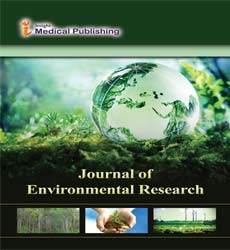Renewable resource-based material synthesized from lignocellulosic biomass
Abstract
Lignocellulosic biomass is made up three main component, i.e. cellulose, hemicelluloses, lignin, and expected as an alternative resource of fossil resource. It is used to produce biofuels and biomaterials, and its increased use would lower environmental impacts such as the emission of greenhouse gases and fossil fuel depletion. In East Asia, disposable wooden chopsticks are used in restaurants, school cafeterias, and homes. The average annual amount of wooden chopsticks disposed of in Japan is about 90,000 t. Therefore, disposable wooden chopsticks can be considered as a promising candidate for raw materials of useful fuel and chemicals production. In this study the total biorefinary process of lignocellulosic biomass was developed using high temperature and pressure steaming and milling treatment (SM treatment). Biorefinery is a process that produce fuels, power, heat, and value-added chemicals from biomass using various pretreatment, extraction, separation, and conversion methods. The biorefinery concept is analogous to today's petroleum refinery, which produce multiple fuels and products from petroleum. We evaluated the efficient separation and utilization of woody structural components from waste BODE chopsticks by using SM treatment followed by water and acetone extractions. The water soluble material was converted into methane or functional food ingredients. Acetone soluble material (Low molecular weight lignin, Mn 1300, Mw 4300) was used as not only a raw material for the synthesis of lignin epoxy resin but also curing agent for curing reaction of epoxy resin. Residue after water and acetone extractions (Mainly cellulose component) was converted into methane or cellulose nanofiber. Furthermore, the mechanical and thermal properties of cured lignin epoxy resin and cellulose nanofiber were evaluated. As a result, we could show the mass balance of extracted and separated components from SM treated waste BODE chopsticks (Figure 1). Recent Publications 1. Asada C, Sasaki C, Takamatsu Y, Nakamura Y (2015) Conversion of steam-exploded cedar into ethanol using simultaneous saccharification, fermentation and detoxification process. Bioresource Technology 176: 203-209. 2. Asada C, Basnet S, Otsuka T, Sasaki C, Nakamura Y (2015) Epoxy resin synthesis using low molecular weight lignin separated from various lignocellulosic materials. International Journal of Biological Macromolecules 74: 413-419. 3. Asada C, Sasaki C, Hirano T, Nakamura Y (2015) Chemical characteristics and enzymatic saccharification of lignocellulosic biomass treated using high-temperature saturated steam: Comparison of softwood and Hardwood. Bioresource Technology 182: 245-250. 4. Sasaki C, Yoshida Y, Asada C, Nakamura Y (2016) Total utilization of Japanese pear tree prunings: Extraction of arbutin and production of bioethanol. Journal of Material Cycles and Waste Management 18: 385-292. 5. Suzuki A, Sasaki C, Asada C, Nakamura Y (2017) Characterization of cellulose nanofiber from steam-exploded Japanese cedar. BioResource 12: 7628-7641.
Open Access Journals
- Aquaculture & Veterinary Science
- Chemistry & Chemical Sciences
- Clinical Sciences
- Engineering
- General Science
- Genetics & Molecular Biology
- Health Care & Nursing
- Immunology & Microbiology
- Materials Science
- Mathematics & Physics
- Medical Sciences
- Neurology & Psychiatry
- Oncology & Cancer Science
- Pharmaceutical Sciences
